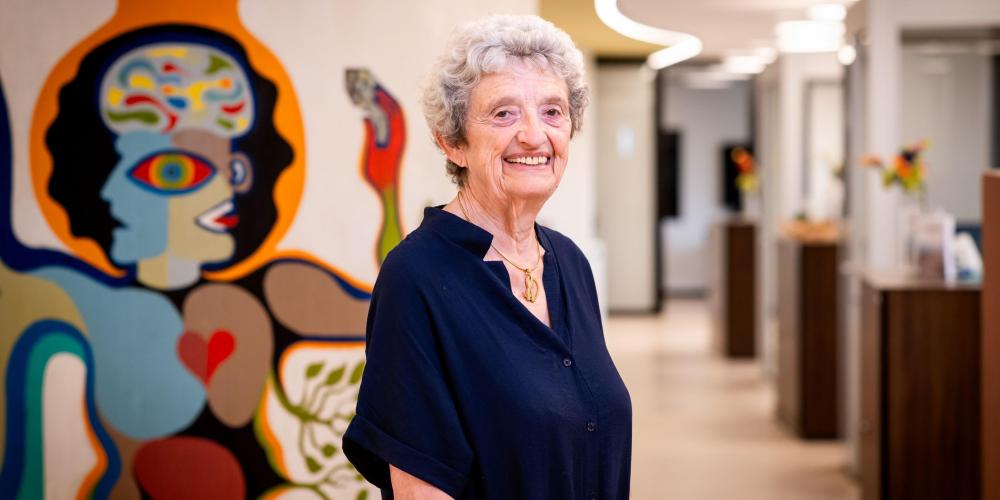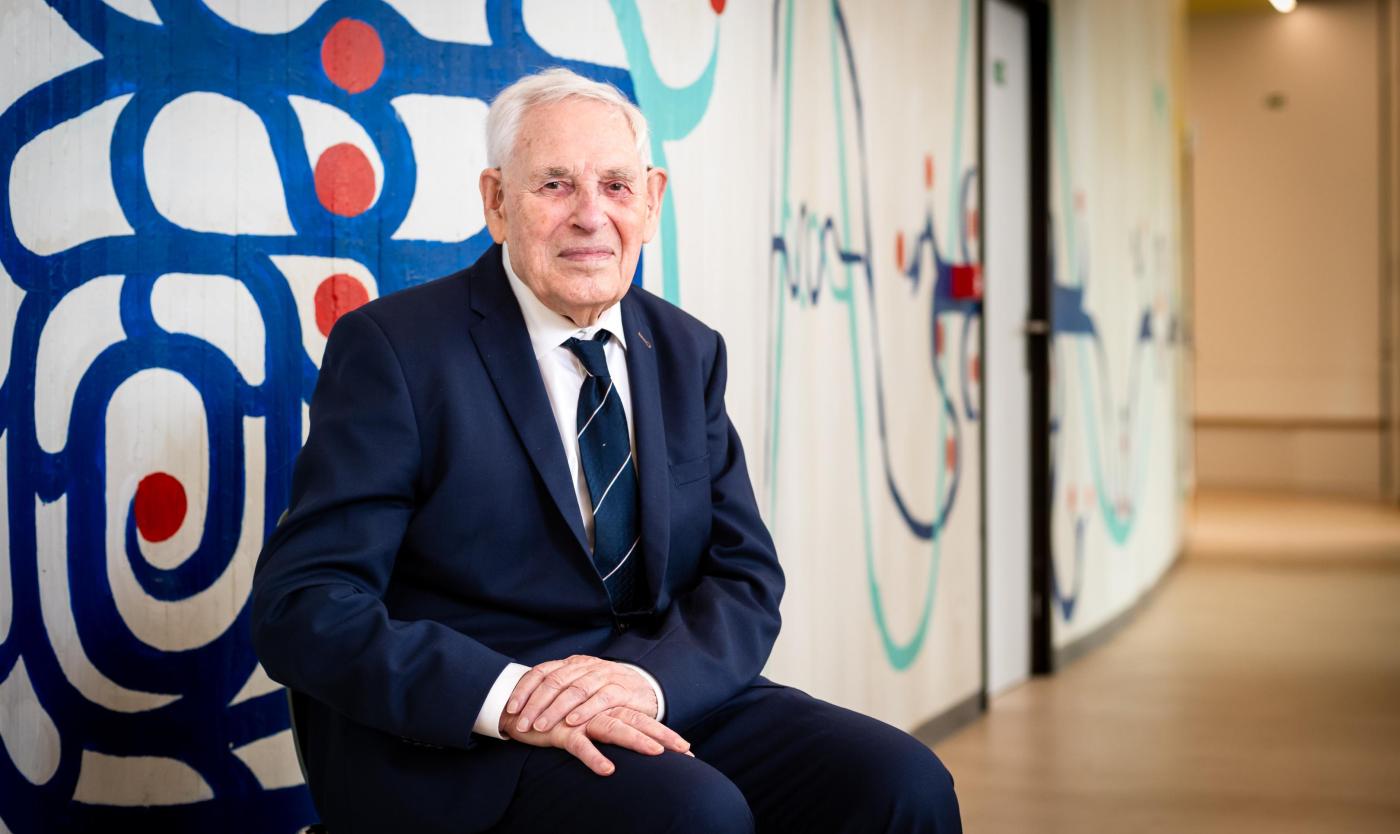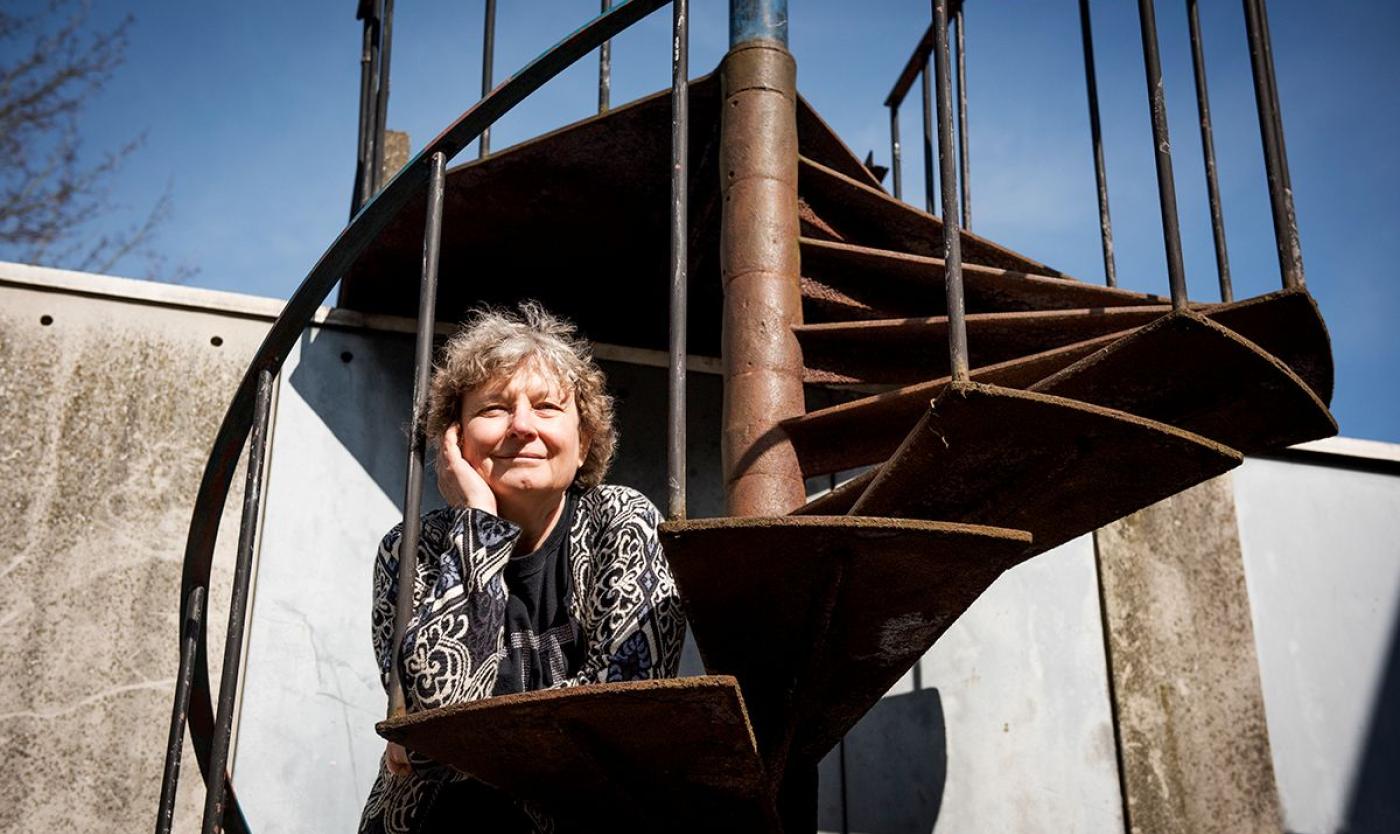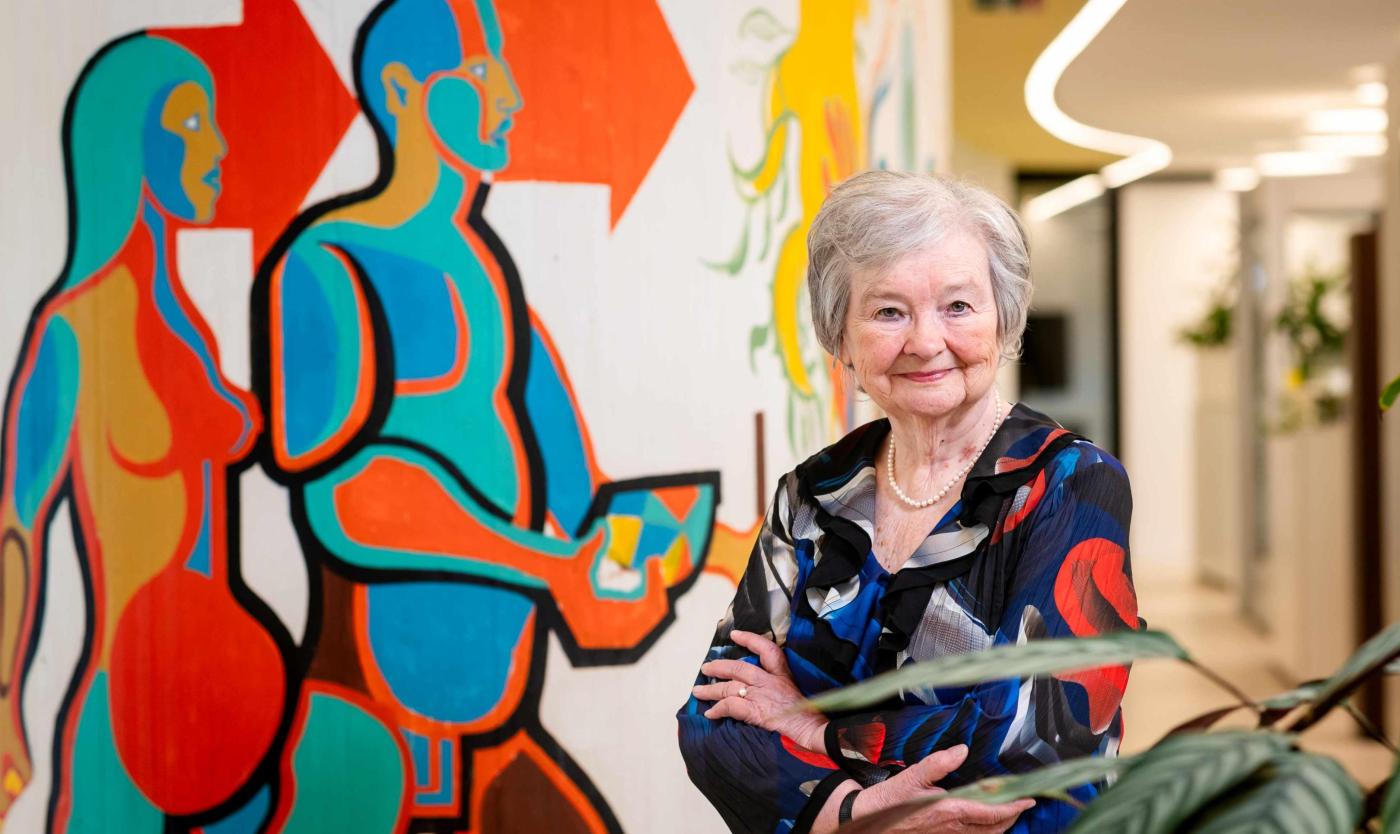
Prof. em. Inge Liebaers (b. 1945) began her career as a paediatrician, but after conducting research in the United States, she was invited to set up the Centre for Medical Genetics at the VUB. There, she pioneered the technique of pre-implantation genetic diagnosis. “You really can’t object to trying to bring the healthiest possible babies into the world.” Prof. emeritus André Van Steirteghem is the other namesake of this Liebaers–Van Steirteghem award.
Read here about the other namesake of this award: André Van Steirteghem.
Who or what gave your career its decisive turn?
“In 1982, I was asked to establish the Centre for Medical Genetics at the VUB. I had just returned from research in the United States, and they were looking for a doctor to lead the centre. I hesitated at first. I was still young, trained as a paediatrician, and taking on such a position had never been part of my original plan. But the field drew me in. When you work with children born with abnormalities, you quickly encounter genetic causes. My research in the US had already taken me in that direction. I soon realised I had to seize the opportunity. In the end, I headed the CMG until my retirement in 2010, and stayed on for another five years as a consultant.”
"I worked with families where one or both parents had a genetic condition"
“Given the VUB context, I was able quite early on to engage in prenatal diagnosis within the Centre. I worked with families where one or both parents had a genetic condition, or who had already had a child with a genetic disorder, and faced the risk of passing it on again. At first, we relied on amniocentesis. If the foetus was affected, parents had the option of terminating the pregnancy.
That was somewhat easier to address at the VUB than elsewhere in Flanders. But eventually we began to ask whether we could test earlier, so as to avoid terminations altogether. Together with the Centre for Reproductive Medicine, we developed pre-implantation genetic diagnosis (PGD), now called pre-implantation genetic testing (PGT). In practice, this meant testing an embryo at three or five days old for a specific condition, and transferring only the healthy embryos. We were among the first in Belgium to develop the technique – the very first PGD took place in England, and we followed soon after. I’m talking about the early 1990s, but even today, PGT remains an important activity at UZ Jette.”

"It has happened that after an amniocentesis we said that the baby was healthy, and that turned out not to be the case. Those are very difficult moments"
What was the hardest moment in your career?
“From a management perspective, it was always a challenge to secure enough funding. We had to fight for resources from time to time. But what concerned me far more were the occasions when a prenatal diagnosis turned out to be wrong. It did happen: after an amniocentesis we would tell parents their child was healthy, only to later discover it wasn’t. The same happened once with a PGT. Those are heartbreaking situations. As a doctor, you know such things can occur despite every precaution. But still – they’re very difficult moments. In those cases, I always tried to communicate with the patients as openly as possible.”
“I can’t say I lost sleep for nights on end. Delivering bad news is part of the job as a doctor. You cannot survive in medicine if you let such cases consume you entirely. I saw many distressing situations: sick parents, sick children, families with multiple affected children. You have to find a way of setting it aside. I think all doctors learn that, otherwise you simply couldn’t function.”
Where do your work and personal passions meet?
“I’m a caring person, but that wasn’t my original motivation for studying medicine. I chose it out of an interest in how the human body is put together and how it functions. That’s also what led me into research. Yet contact with people became the common thread running through my life. In that sense, my way of living and my work were very closely linked. Professionally, I spent my days listening to people’s problems and looking for solutions – and in many ways, that’s still what I do today. Since retiring, I’ve volunteered with NASCI, an NGO supporting disadvantaged mothers in Brussels, and I also sit on the board of the Huis voor Gezondheid, also in Brussels. The social engagement has remained.”
Where do you think your field is heading?
“Genetics is developing at great speed – sometimes too fast. Some people think that whatever is possible should be applied straight away. I’m more cautious. Of course, you can’t object to trying to bring the healthiest possible babies into the world, but if the science isn’t yet fully reliable, I think it’s wrong to experiment prematurely. So far, PGT has focused mainly on what we call monogenic disorders – inherited conditions caused by a single gene defect. Those are clear-cut, black and white. But in the United States, they now have techniques to test embryos for multifactorial conditions, such as cardiovascular disease. There, it’s no longer yes-or-no, but a matter of risk scores. You can end up in a situation where none of the embryos is entirely “healthy” – each carries a different level of risk. Parents then have to decide which embryo to choose. The technology isn’t yet sufficiently reliable, so I would be much more cautious about applying it at this stage.”
What message would you give to young scientists?
“Be thorough in your research, but don’t lock yourself away in your own little corner. Stay open to fellow researchers and to the wider world. Many scientists fear that if they share their findings too soon, someone else will steal their ideas. I never felt that way. In fact, I believe you can get much further if you communicate openly about your work. That we were able to play a pioneering role internationally with PGT was certainly due, in part, to the excellent collaboration at the VUB between the Centres for Medical Genetics and Reproductive Medicine. We were in the same hospital, we worked closely together, and there was always strong mutual contact. Perhaps that was no surprise – André Van Steirteghem, one of the founders of the fertility clinic, is my husband. The fact that a prize is now named after both of us is symbolic of the collaboration that has always been there.”
About the new science awards
In 2025, VUB launched a new research awards policy in collaboration with the Scientific Support Fund. In addition to the existing Roger Van Geen Prize for exceptional scientific careers and the Ignace Vanderschueren Prize for doctoral research, both already awarded by the Vice-Rectorate for Research, seven new prizes have been created, named after pioneering figures from VUB’s history. With this policy, the university aims to recognise outstanding scientific work at every stage of an academic career.
An overview
- Hilde Bruers Award – Life Sciences (young researchers, max. 10 years of seniority)
- Paul De Vroede Award – Human Sciences (young researchers, max. 10 years of seniority)
- Ingrid Daubechies Award – Basic, Natural and Applied Sciences and Bioengineering Sciences (young researchers, max. 10 years of seniority)
- Franz Bingen Award – Basic, Natural and Applied Sciences and Bioengineering Sciences (mid-career researchers, 10–25 years of seniority)
- Liebaers–Van Steirteghem Award – Life Sciences (mid-career researchers, 10–25 years of seniority)
- Els Witte Award – Human Sciences (mid-career researchers, 10–25 years of seniority)
- Sylvain Loccufier Award – career award for researchers who combine scientific excellence with social impact in the spirit of the values of the VUB
Procedure
The Roger Van Geen, Hilde Bruers, Liebaert–Van Steirteghem, Franz Bingen and Sylvain Locufier Prizes will be awarded biennially from 2026 onwards. The Ignace Vanderscheuren, Paul De Vroede, Els Witte and Ingrid Daubechies Prizes will follow the same rhythm from 2027. The call for nominations is issued in September, with 15 December as the submission deadline. Files are evaluated by the Bureau of the Research Council or by an ad hoc committee (for the Sylvain Loccufier Prize). The Scientific Support Fund makes its final decision by 30 March, and the award ceremony takes place before 30 May.
The prize money is €5,000 for young researchers and €10,000 for mid-career researchers, in each case in the form of a working credit. The Sylvain Loccufier Prize does not involve a cash prize, but a work of art.
View the Vice-Chancellor's call for 2025(through WeAreStaff)
*For medical reasons, it was not possible to interview Prof. Emeritus Franz Bingen in time for this series.




